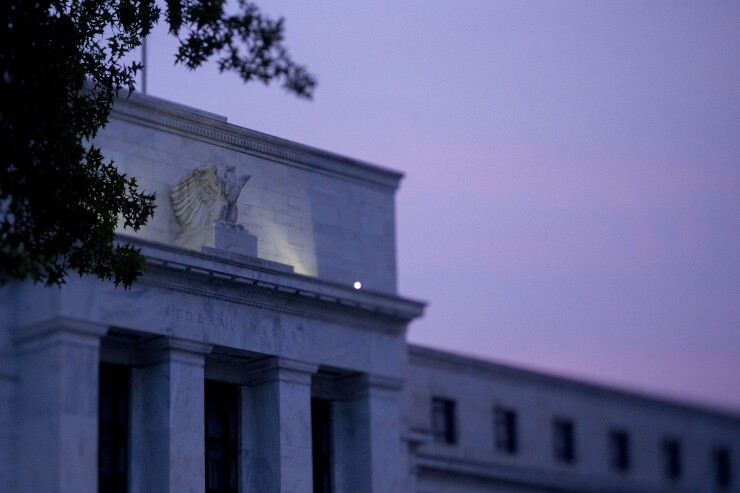2020. What once seemed like a far-off and futuristic date is just around the corner. Even if 2020 doesn’t deliver on the space travel and intelligent robots promised in science fiction, we can be confident that Americans will at least have access to new payments systems that are suited to the modern digital economy.
2020 is the target date that the Federal Reserve’s Faster Payments Task Force has set for faster payments to be available to every U.S. consumer and business. That task force, composed of more than 300 delegates representing financial institutions, corporate treasurers, consumer advocates, financial technology firms, industry associations, academics, and many other groups, convened in 2015 to establish the criteria for a successful faster payments system in the U.S.
The Federal Reserve’s Faster Payments Task Force deserves credit for focusing the industry on this extraordinary initiative.
It’s not just the scope of the effort that makes this endeavor historic, although linking more than 10,000 financial institutions in a few years certainly is a monumental task.
And it’s not just the speed of payments, which will clear and settle in seconds. Rather, the advent of faster payments promises to transform commerce for both consumers and businesses.

Building new payments systems also provides an opportunity to build in capabilities that go beyond merely moving money. New payments systems will allow everyday financial tasks such as paying bills, issuing invoices, making payroll or settling insurance claims to be easier, faster, safer and more efficient. The ability to manage cash flow down to the second will free up working capital for businesses and make life less stressful for consumers on tight budgets.
It makes sense that the banking industry is playing a leading role in developing faster payments for the U.S. Faster payments naturally fit and enrich the relationship between regulated financial institutions and their customers.
Payments are the most frequent interaction any customer has with his or her financial institution, and a better payment experience will make these interactions more satisfying. The broader range of capabilities beyond payments will provide further opportunities to improve the customer’s experience, such as avoiding fees associated with late payment of bills and reducing disputes about invoice payments, delays in financial transactions, and costly errors and uncertainty.
Ultimately, the ability of a financial institution to offer innovative digital payment services through existing deposit accounts will enhance the options that these institutions provide customers for managing their financial lives and make user experiences all the better.
This is only the beginning of the faster-payments age in the U.S. Just as the pioneers of the internet could not have predicted Facebook, Google or Amazon, we can’t pretend to know what new uses real-time payments will enable in the years to come.
We are, however, seeing early signs of how faster payments can help businesses and consumers improve everyday financial tasks. For example, billers have expressed interest in not only receiving prompt payment but also in using the ability to deliver “reminder” notices through banks’ mobile applications that allow customers to make immediate payment. By encouraging timely payment, billers can improve cash flow and avoid the cost and potential loss of customers that often come with missed payments, late fees and service interruptions.
As another example of the utility of faster payments solutions, commercial accounts payable and receivable managers are planning to use the extensive, tightly integrated data delivery capabilities of faster payment formats to streamline back-office processes. Combined with immediate payment confirmation, these improvements promise fewer exceptions and more predictable cash flow.
Perhaps the most exciting ideas are specialized applications that target narrow, industry-specific needs. Financial institutions and their customers are considering the use of faster payments for route delivery collections by food services suppliers, medical payments to doctors, royalty payments to developers and musicians, compensation for travel disruptions and payments to ride-share drivers. All of these applications benefit from the speed, certainty and data-carrying capabilities of faster payments.
If we were just starting today, I would say that delivering a faster payments platform by 2020 was an unrealistic dream.
Fortunately, the banking industry has been proactive and has already begun designing and standing up faster payment solutions.
Customers are getting ready, too. Major national billers, insurance companies, commercial suppliers and medical plans are gearing up for faster payments. Forward-thinking small to midsize firms are also talking with their banks about creative ways to improve cash flow, reduce back-office costs and improve their customers’ experience.
I am confident that the industry is up to the challenge of providing every American with faster payments by 2020. It won’t be easy, and this will take a vigorous effort by financial institutions of all types and providers of financial technology. Achieving ubiquity also will require the support of financial regulators as well as the creativity of the financial services providers and their customers to find innovative ways to use this transformative technology.





